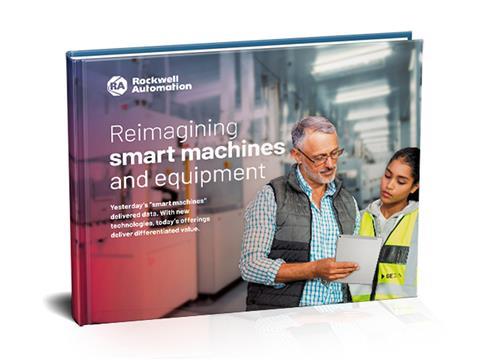
Learn more about Rockwell Automation’s collaboration with Harpak-ULMA in our latest Innovation Spotlight, and see how this machine maker’s digital transformation strategy uses the IIoT and AR to expand what’s possible for both it and its end users.
For packaging OEM Harpak-ULMA, the value of digital transformation is in its ability to help end-users better adapt to market changes. So, they’ve set up a four-step digital transformation strategy that’s about expanding what’s possible, not only in its own operations but in those of its end users.
This maker of packaging machines and end-to-end packaging line automation solutions began its digital transformation journey in October 2018. The goal of the multiphase, years-long initiative is to support revenue growth and create new business lines for the company. The firm’s leaders also want to transform what’s possible for customers in the food, medical and industrial markets by providing them with smart, connected packaging machines.
For Harpak-ULMA, digital transformation’s value is in its ability to help end-users better adapt to market changes.
“Digital transformation has legs for a reason,” says Kevin Roach, president, Harpak-ULMA. “It helps us do more and go faster, by leveraging data to make the traditional barriers to change — that is time, cost, and risk — easier to manipulate.”
Improving agility
The company launched its digital transformation initiative with a technology roadmap that included four phases.
The first phase was to establish a smart, connected foundation for end-users by migrating to a single, standardized control platform. Harpak-ULMA chose to standardize on Rockwell Automation controls and components, providing an open-architecture foundation for smart, connected machines.
In addition, Rockwell Automation Strategic Alliance Partner PTC provides pre-integrated compatibility with control solutions from Rockwell Automation. PTC’s Industrial Internet of Things (IIoT) software applications — Vuforia® augmented reality (AR) and Thingworx® industrial connectivity — help reimagine how people operate and maintain production assets.
The second phase involved implementing AR workflows to help drive productivity.
“From a customer-impact standpoint, the ability to deliver instantly understandable visual training or guidance, or to collaborate with an expert resource, it’s a game-changer,” believes Roach.
With on-demand expertise and visual guidance delivered through AR technology, Harpak-ULMA can support end-users from anywhere and introduce new capabilities like virtual factory acceptance tests. Meanwhile, end users can use the technology to reduce operator learning curves and on-boarding times.

Creating new insights
Harpak-ULMA has made significant progress on phase two, and is now underway on phase three, which involves incorporating more IIoT touchpoints. This essentially combines packaging machines with their digital twins to offer enhanced operating experiences and information integration.
“Expanding the breadth and depth of embedded IIoT lets us integrate with advanced IIoT applications that expose detailed machine operations in real-time to production staff,” Roach explains.
For end-users, more data means more real-time, contextualized production information is available to both staff and onboard diagnostics.
“In this stage, we’re expanding on AR capabilities to deliver a deeper set of real-time capabilities that will allow staff to have what we call X-ray vision,” he says. “Exposing the digital twin of a machine is an interactive way to learn more and diagnose better.”
For example, if technicians get alerts about machine problems, they don’t need to shut down the machine, go through lockout/tagout procedures and open the control cabinet to investigate the problem. Instead, they can just use an AR headset, smartphone, or tablet to look at a digital twin of the machine and identify the fault.
Future predictions
The fourth phase of Harpak-ULMA’s digital transformation is to apply machine learning and artificial intelligence (AI) to the vast amount of data collected during production. This effort, while still in the planning stage, will allow the company to create new business models by introducing cloud-based predictive maintenance and benchmarking services.
“This final stage represents an evolutionary step for customers in terms of their OEM relationship,” Roach notes. “Big data solutions that use machine learning and artificial intelligence will make the holy grail of predictive maintenance analytics in our markets attainable.”
For end-users, predictive maintenance can help reduce unplanned downtime, as well as restructure legacy maintenance and cost models. And industry-wide benchmarking offers them an opportunity to get a new understanding of the effectiveness of their production processes.
Of course, making these concepts a reality in production environments will come with challenges.
“We’ll need to resolve data ownership concerns and work through connectivity issues that arise with predictive maintenance monitoring,” Roach admits. “But it’s not like there’s no precedent. If this can be done for aircraft engines, it can be done for a packaging production environment as well.”

As an OEM, how do you keep up with marketplace challenges? This eBook from Rockwell Automation explains that the answer is: with information-enabled, smart machines and equipment that use advanced technology — and are built on a foundation that securely and safely connects to the production environment and beyond.
Click here to download the eBook.
This content was sponsored by Rockwell Automation.




















